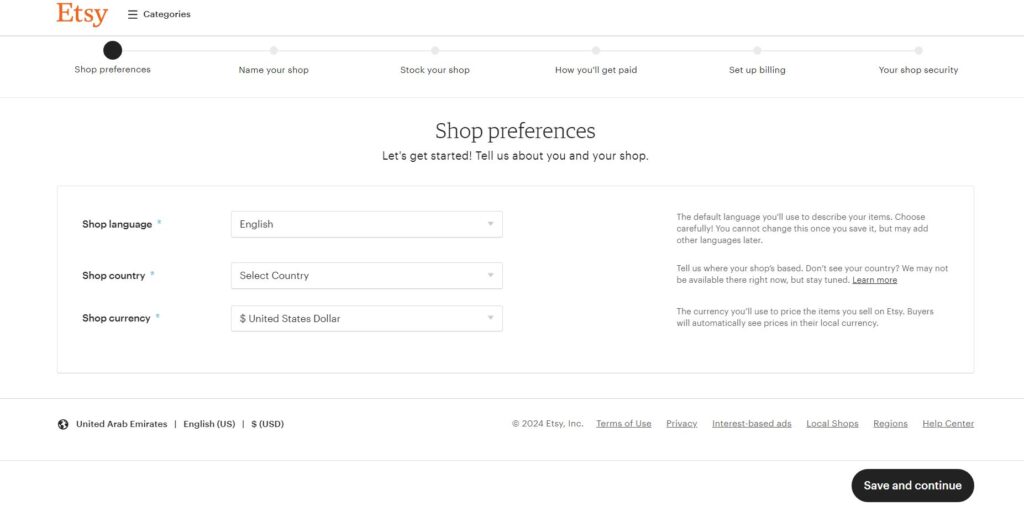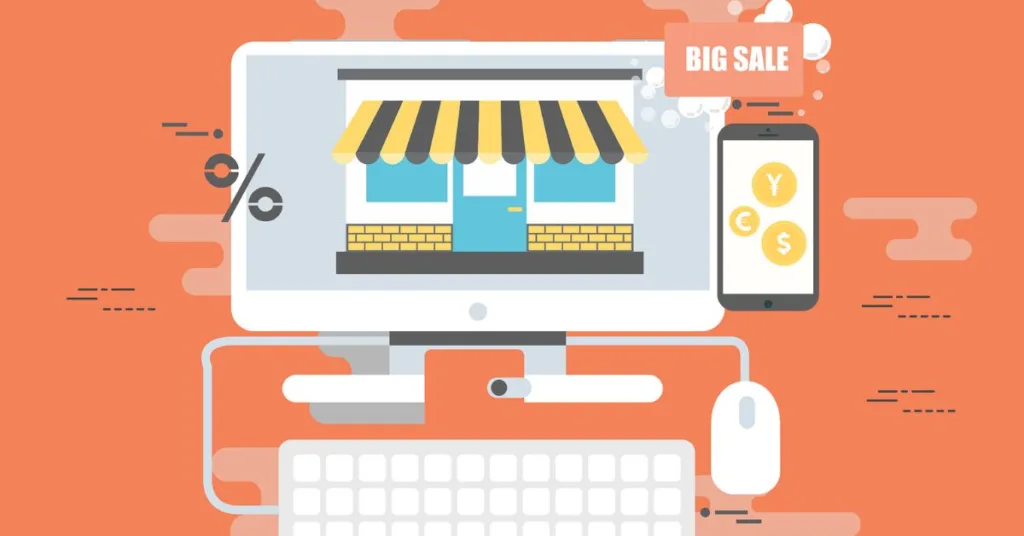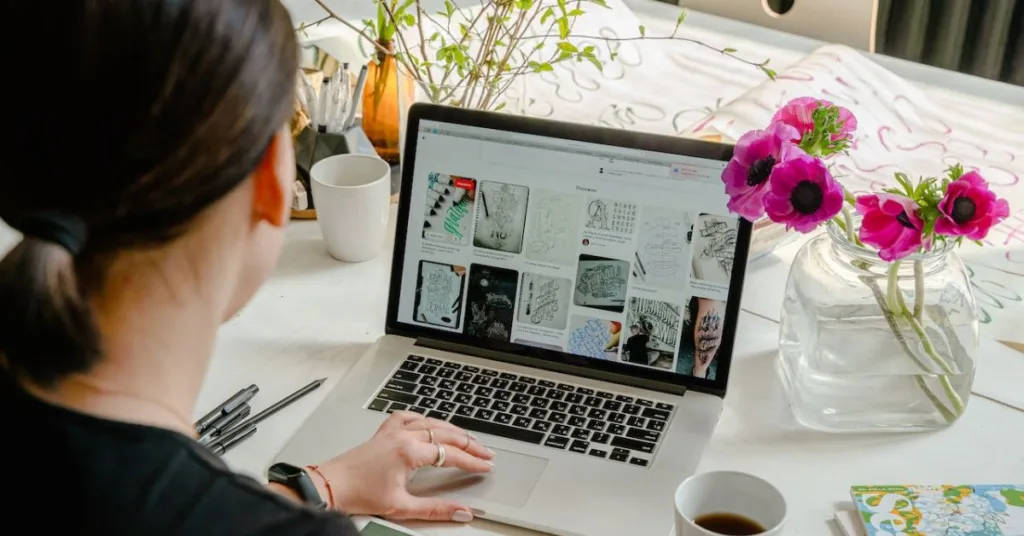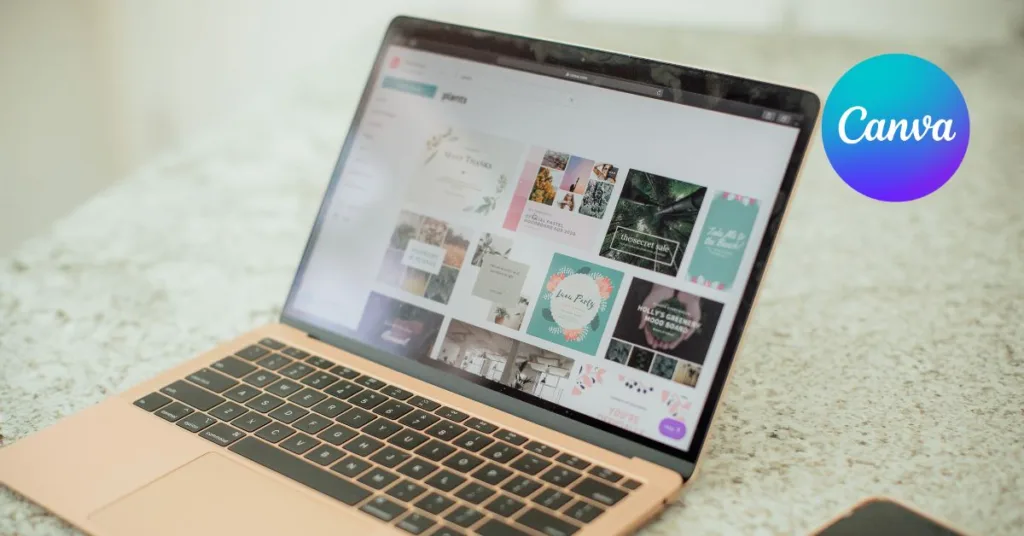This post may contain affiliate links to products or services. I may receive a commission for purchases made through these links with no cost on you. Please read my disclosure for more information.
Have you heard of Etsy and curious on how to start? In this post, I will walk you through on how you can start selling on Etsy in 6 Simple Steps.
WHAT IS ETSY?
Etsy is a popular online marketplace where people can buy and sell handmade, vintage, and craft supply items. They have also included digital products/ download in recent years.
Sellers on Etsy can create their own shops to showcase and sell their items, and buyers can browse and purchase those items directly from the sellers.
Just to let you know, Etsy has no warehouse. So, when you shop on Etsy, you are dealing directly with independent sellers that manages their own orders and inventory.
WHY SHOULD YOU START SELLING ON ETSY?
Selling on Etsy can be a profitable and fulfilling experience for many small business owners.
Here are several reasons why you might consider selling on Etsy:
First, Etsy is a trusted and popular platform that specializes in handmade, vintage, and unique items.
Therefore, if your products fall into these categories, you can attract a targeted audience interested in your products.
Second, it boasts over 90 million active buyers on its platform, which are your potential customers.
Instead marketing your products on your own, you can take advantage of Etsy’s existing audience.
Third, Etsy provides a platform for sellers to reach a global audience. This is particularly an advantage if you are selling digital products.
Fourth, it is the fastest, cost-effective, and easiest way to sell your physical and digital products online.
Fifth, it has a powerful search engine. And if done properly, it can connect you to the right customers looking for your products.
THINGS to KNOW BEFORE you start SELLING ON ETSY
I know that you are eager and excited to sell on Etsy, now that you know the potential money making it can provide you.
But before you dive in, be aware that there are certain things you need to know before selling on the platform.
1. What Are the Prohibited Items to Sell
Not all items can be sold on Etsy, some of the items that are prohibited to sell includes but not limited to:
- tobacco
- drugs or drug paraphernalia
- weapons
- hazardous materials
- nudity and mature content
- items that use the intellectual property of someone else
- etc…
Check out: Prohibited Items Policy on Etsy
2. Which Country Is Your Shop Located
Etsy has enlisted certain countries that are eligible for payments. It means that your shop should be based in countries listed on this list.
When I started my shop, the current country where I am now is not listed.
However, since my home country is listed, I used that instead to open my shop.
Don’t worry if your country is not currently in the list, Etsy may add more countries in the future.
Check out: Countries Eligible for Etsy Payments
3. You Need to Check the Sellers Policies
Etsy made sellers policies to make sure buyers and sellers have a positive experience.
As sellers, you have certain rights and Etsy as well. These expectations are set out in the Sellers Policies.
Selling unique products, respect for intellectual property rights (including trademarks and copyrights), honest and transparency, importance of good customer service, shipping and fulfilment, privacy and protection, and payments and fees are just some topics covered.
4. There are fees to be paid
Since Etsy needs to maintain the platform, you should understand that there are fees associated opening a shop.
1. Listing fee
You will only be charged a listing fee of $0.20 for creating or renewing a listing on Etsy; there is no fee for editing a listing. listings expire after four months.
You can get your first 40 items for FREE when you use this link.
2. Transaction Fees
You will be charged a transaction fee when you make a sale through Etsy.com.
It is 6.5% of the price you display for each listing plus the amount you charge for shipping and gift wrapping.
3. Other Fees
Additional fees you may have to pay when selling on Etsy are subscription (for Etsy Plus), currency conversion, in-personal selling, regulatory operations, shipping, advertising/promotional, pattern, payment processing (if using Etsy payments) and promotional charges.
Check out: Fees and Payment Policy
WHAT CAN YOU SELL ON ETSY?
Etsy is known for buying and selling physical handmade items, vintage goods, and craft supplies.
Examples of products you could sell includes:
- handmade candles
- handmade jewelry
- handmade clothing
- hand-painted artwork
- handcrafted home decor
- vintage clothing
- antique home decor
- collectibles
- vintage jewelry
- beads and jewelry-making supplies
- paints and brushes
- DIY craft kits paper crafting supplies
In recent years, they have included digital downloads/products in their platform which is super nice.
Some examples of digital products/ downloads you can sell are:
- invitations (wedding, birthday, etc.)
- planners
- calendars
- posters
- digital paper
- classroom printables
- printable games
- digital elements
- clipart
- svg cut files
- social media story highlight covers
- website theme
- printables colouring pages
- printables cards (thank you, christmas, valentines, etc.)
- printable wall art
- checklists
- trackers
- e-book
- resume template
- canva templates
- branding packages
- budgeting spreadsheets
- saving challenges
6 SIMPLE STEPS ON HOW TO START SELLING ON ETSY
Now that you know why you should be selling on Etsy and the product you will sell, then you’re ready to set up your shop.
Here are the 6 steps on how to start selling on Etsy:
1. Create an Etsy Account (if you don’t already have one)
You need an email account to create and Etsy account. I recommend creating an email address dedicated to your shop.
You will receive an email from to confirm your account.
Tip: To get your first 40 listings for FREE, you can use this link.

2. Set Up Your Shop
This is where you will set up your shop preferences (shop language, country, and currency) and shop name.
Your shop name is the first step in creating an identity for your business on Etsy.
Tip: Choose a name that is related to the product you want to sell and is easy to memorize. You can also use your name if you want to build a personal brand.
3. List Your Product and Optimize
After setting up your shop, you should create a listing for each item you want to sell in your shop.
Fill up all the required fields and use relevant keywords in your titles, descriptions, and tags.
It will be useful to provide detailed and accurate product descriptions, including dimensions, colours and materials.
Price your items competitively without compromising the quality and your effort you put into making your product.
You’ll need photos of your products you want to sell.Etsy allows up to 10 photos per listing, so take advantage of this to give potential buyers a comprehensive view of your product.
Try also to add a video because based on Etsy analytics, a listing with Video gets more sales.
Tip: Before opening your shop, do a keyword research and survey your competition. You can also prepare your mock up photos, so you could fill up this step faster. You can always edit your listing after opening your shop.
4. Set up Payment, Billing and Shipping Options
You need to set up your Payment method, where you should connect your bank account to your shop. This is the bank where Etsy will pay you.
You also need to set up your billing method and enter a debit/ credit card so you can pay your bills on Etsy.
Tip: When you make your first sale, they will verify your bank details and will send you a small amount to verify it.
5. Add more listings
Continue to add more listings in your shop after creating your first listing to gain visibility and rank for other keywords.
Do you know that Etsy is pushing new listings on the first page of the search to see how they will perform? So, listing an item everyday will give your listings a chance to shine.
That is why I recommend adding at least 1 listing a day (2-3 for digital products).
Tip: You can add listings with different designs or variations.
6. Market and Promote Your Shop
After listing your items, you cannot expect a sale immediately. You need to promote your items to get more eyeballs.
You can share your listings on Pinterest or social media platforms such as Facebook, X (formerly Twitter), Instagram, TikTok, YouTube etc.
Remember to do some improvements to your shop daily. Create your About page, banners, policies, make announcements, offer discounts, etc.
Tip: You can also offer a “grand opening sale” with xx% OFF to attract customers.
You also need to respond promptly to customer inquiries and provide excellent customer service to build a positive standing both on your potential buyers and on Etsy.
It’s also a good idea to stay informed about any changes to Etsy’s policies, programs and features that could affect your shop.
CONCLUSION
Opening a shop on Etsy is quite simple, but make sure you have done your own initial research on keyword, profitability, demand, and competition.
Like any other start up business, be prepared for a lot of time, effort, and hard work you have to put in to make it work.
Once you have set up your shop and get used to it, you can learn strategies on how to grow your shop. A successful business takes time to build, it’s not an overnight success. So be patient and persevere. Learn as you go and never give up.
ACTION PLAN (IF YOU’RE READY TO start selling on etsy)
1. Decide on the product you plan to sell; it may be either physical or digital products. I have shops selling digital products, for a couple of reasons (instant download, no shipment fees, minimal costs, passive).
2. Do your Etsy Keyword Research, you can sign up for FREE with ERank.
3. Check out your competition and analyse their products (with the Bestseller badge), prices, descriptions and tags.
4. Develop your brand/shop name and branding assets.
5. Prepare your products (for physical) or create your products using a graphic design tool like Canva. Tip: check out my blog post on How to Create Printables Using Canva.
6. Take high quality photos or create mock up photos for your products or designs.
7. Open your Etsy Shop using this link to get your FREE 40 listings. Listing fee for each item cost $0.20, saving you $8.00 total.
8. Create your listing, filling up every important detail such as title, tags, description, shipping, and pricing.
9. Promote and market your shop on Pinterest and other social media platforms.
10. Excel on customer service.
11. Show up, improve your shop every day, and add more listings.
YOU CAN DO IT!





